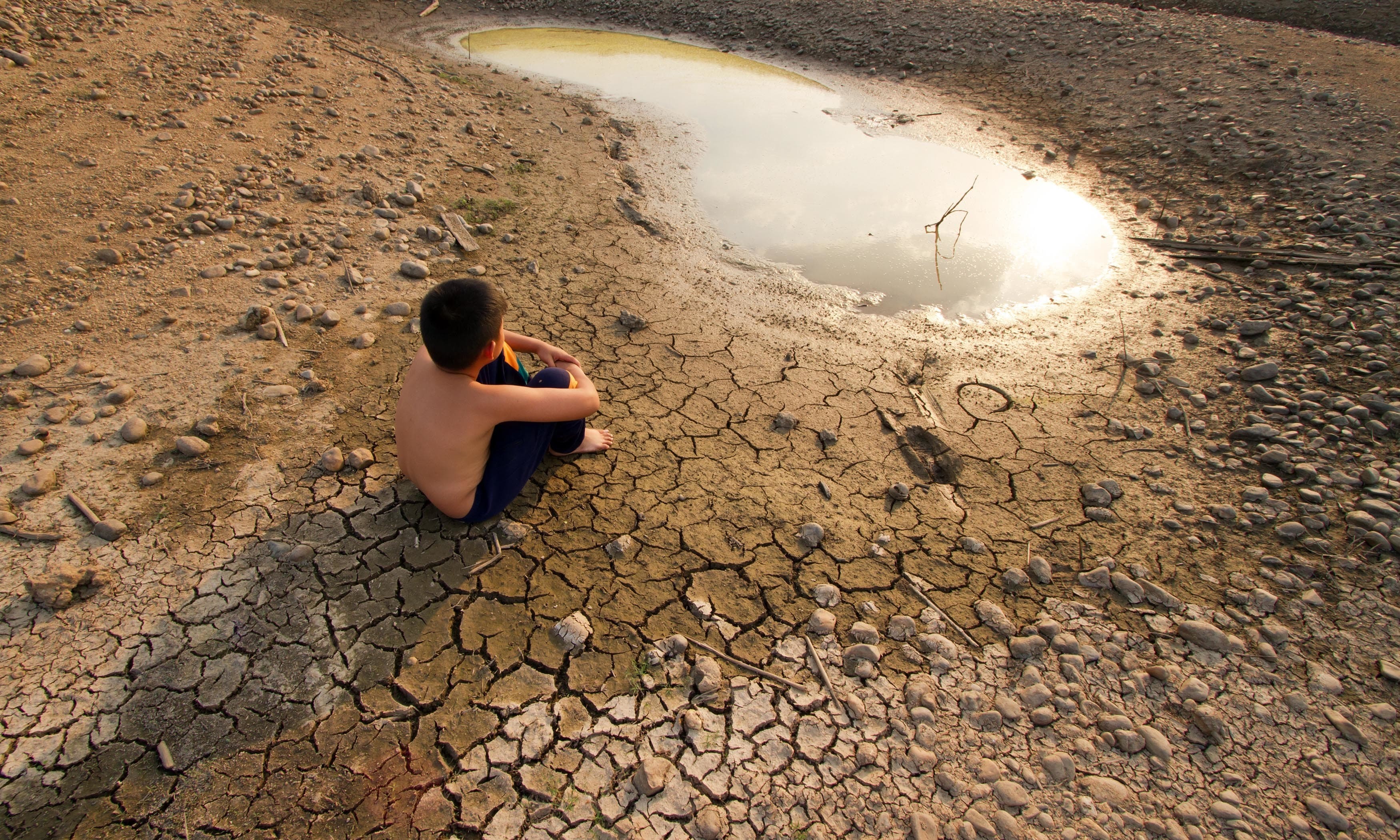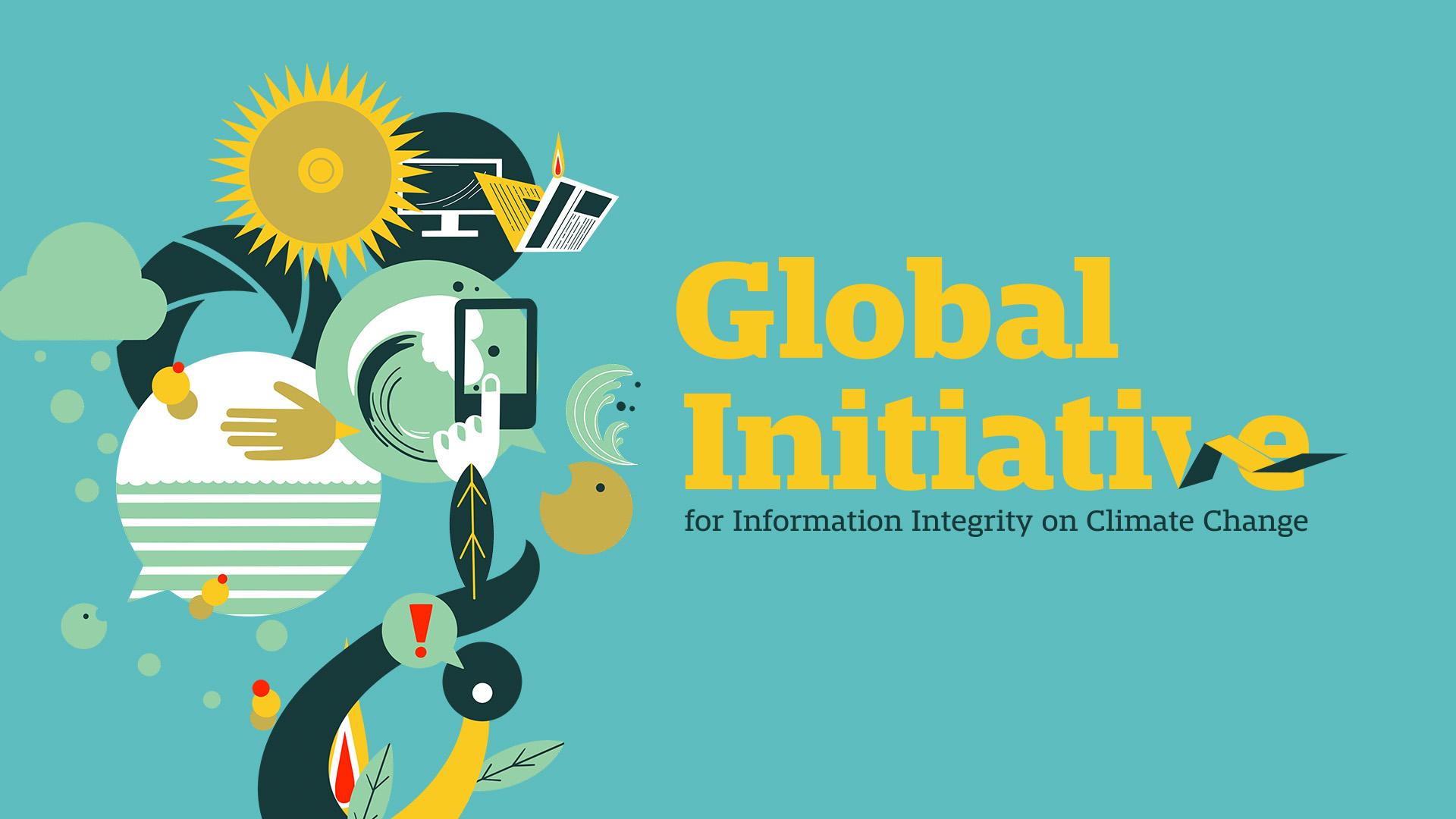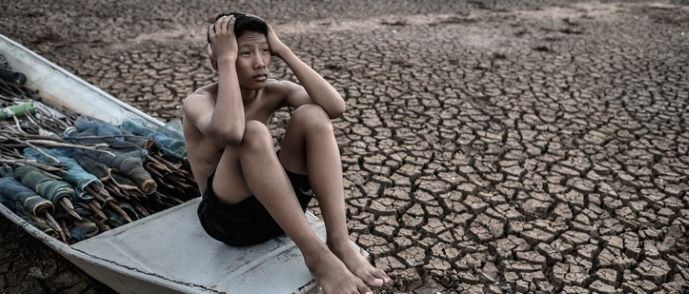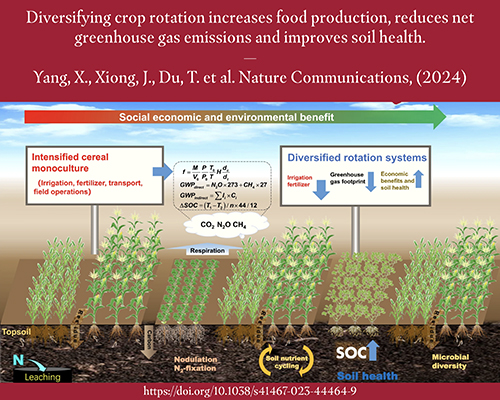Report on Socioeconomic Vulnerability Projections and Alignment with Sustainable Development Goals
Introduction: A New Framework for Assessing Climate Vulnerability
A new global database projects socioeconomic vulnerability to climate change for the period 2020-2100. This report analyzes the database’s methodology and findings, with a significant emphasis on its alignment with the United Nations’ Sustainable Development Goals (SDGs). The research underscores that climate risk is a function of physical hazards, exposure, and human system vulnerability. By strengthening social systems, communities can mitigate losses, directly contributing to the achievement of multiple SDGs, particularly SDG 13 (Climate Action).
Methodology: The Global Vulnerability Index (GVI)
A research team led by Dr. Janine Huisman of Radboud University, in collaboration with Climate Analytics, developed the Global Vulnerability Index (GVI). This composite index quantifies societal capacity to respond to climate hazards by integrating 11 indicators across seven critical domains. These domains are directly linked to specific SDGs:
- Economy: Correlates with SDG 1 (No Poverty) and SDG 8 (Decent Work and Economic Growth).
- Education: Measured by mean years of schooling, directly supporting SDG 4 (Quality Education).
- Health: A key factor in resilience, aligning with SDG 3 (Good Health and Well-being).
- Gender: Assessed using the UNDP’s Gender Development Index (GDI), targeting SDG 5 (Gender Equality).
- Infrastructure: Essential for emergency response, linking to SDG 9 (Industry, Innovation and Infrastructure) and SDG 11 (Sustainable Cities and Communities).
- Governance: Based on World Bank indicators, crucial for achieving SDG 16 (Peace, Justice and Strong Institutions).
- Demographics: Provides context for population-related pressures and resilience.
Future Scenarios: Shared Socioeconomic Pathways (SSPs) and SDG Alignment
The projections utilize three Shared Socioeconomic Pathways (SSPs) to model how different global development trajectories impact vulnerability and the potential for achieving the SDGs.
- SSP1 (“Sustainability”): This “green road” scenario shows a future with significant progress in health and education and reduced inequality. Under SSP1, global vulnerability decreases steadily, with the most significant improvements in currently vulnerable nations. This path represents a world actively pursuing and achieving the targets of SDG 10 (Reduced Inequalities), SDG 13 (Climate Action), and SDG 17 (Partnerships for the Goals).
- SSP2 (“Middle of the Road”): This pathway projects a continuation of current, uneven development trends. Vulnerability gaps between regions persist, indicating partial and inconsistent progress towards the SDGs.
- SSP3 (“Regional Rivalry”): This scenario depicts a fragmented world with diminished international cooperation. It presents high challenges for climate mitigation and adaptation, leading to slow progress in reducing vulnerability and widening inequality gaps. This pathway signifies a failure to achieve the core principles of the SDG framework, particularly SDG 16 and SDG 17.
Key Findings and Policy Implications for SDG Implementation
The projections reveal critical insights for policymakers focused on climate action and sustainable development.
- Divergent Futures: The gap in vulnerability between high-capacity and low-capacity regions is smallest in SSP1 and widest in SSP3. This highlights that policy choices directly impact the achievement of SDG 10 (Reduced Inequalities).
- Potential for Progress: Under the sustainable SSP1 scenario, countries with the highest vulnerability today can achieve low vulnerability levels by 2100. This demonstrates that a focused development trajectory aligned with the SDGs can overcome initial disadvantages.
- Informing Resource Allocation: The database provides a clear rationale for directing climate finance and development aid. It helps identify regions where social drivers, such as weak governance (SDG 16) or gender inequality (SDG 5), exacerbate climate risk, allowing for targeted interventions. This supports the goals of the Vulnerable Twenty (V20) group of nations.
Utility and Limitations of the Database
Utility for SDG Monitoring
The GVI database is an open-access tool that enables researchers and policymakers to:
- Compare vulnerability scores across countries and over time using a stable formula.
- Integrate vulnerability data with physical hazard maps (e.g., floods, droughts) to create comprehensive risk assessments.
- Identify and prioritize social levers, such as education and healthcare investments, to build resilience and advance multiple SDGs simultaneously.
Current Limitations and Future Directions
The report acknowledges several limitations of the current index:
- National Scale: The index is currently calculated at the national level, which can mask significant subnational disparities. An extension to state and provincial levels is a stated priority to enable more targeted adaptation planning.
- Indicator Gaps: Projections for certain indicators, such as access to safely-managed drinking water (SDG 6), are not yet included. However, robustness checks indicate the composite index remains stable despite these gaps.
Future development will focus on incorporating subnational data and improving projections for a wider range of indicators to provide a more granular tool for advancing climate-resilient development in line with the 2030 Agenda for Sustainable Development.
Analysis of Sustainable Development Goals in the Article
1. Which SDGs are addressed or connected to the issues highlighted in the article?
-
SDG 13: Climate Action
The entire article is centered on climate change, specifically focusing on socioeconomic vulnerability to its impacts. It discusses a new database for projecting this vulnerability and emphasizes that cutting climate risk involves strengthening social systems to adapt to climate hazards.
-
SDG 10: Reduced Inequalities
The article highlights the disparity in vulnerability between different regions, such as “Northern America, Northern and Western Europe” and “parts of Africa, Southern Asia, and Pacific Island States.” It analyzes how different socioeconomic pathways (SSP1, SSP2, SSP3) can either widen or narrow these gaps in capacity and resilience.
-
SDG 4: Quality Education
Education is identified as one of the seven key domains in the vulnerability index. The article explicitly states that “Countries with higher education… tend to anticipate change and adjust faster,” linking educational attainment directly to a society’s adaptive capacity.
-
SDG 5: Gender Equality
Gender is listed as a crucial domain for measuring socioeconomic vulnerability. The article specifies that “Gender inequality is measured with the UNDP’s GDI,” directly connecting the goal of gender equality to building resilience against climate change.
-
SDG 3: Good Health and Well-being
Health is another core domain of the vulnerability index. The text notes that countries with “stronger health tend to anticipate change and adjust faster,” indicating that a healthy population is better equipped to respond to climate-related challenges.
-
SDG 9: Industry, Innovation and Infrastructure
The article identifies infrastructure as a key component of the index. It explains that “Better infrastructure improves evacuation, communication, and emergency response,” linking resilient infrastructure directly to a community’s ability to manage climate hazards.
-
SDG 16: Peace, Justice and Strong Institutions
Governance is included as a fundamental domain in the vulnerability index. The article mentions the use of the “World Bank’s Worldwide Governance Indicators,” suggesting that effective and stable institutions are essential for managing climate risks and fostering adaptation.
-
SDG 17: Partnerships for the Goals
The article discusses different global development paths based on cooperation (SSP1) versus fragmentation (SSP3). It also mentions directing resources to the “Vulnerable Twenty (V20) countries” and using the database to support “international finance decisions,” which relates to global partnerships for sustainable development.
2. What specific targets under those SDGs can be identified based on the article’s content?
-
Target 13.1: Strengthen resilience and adaptive capacity to climate-related hazards and natural disasters in all countries.
The article’s primary focus is on a tool designed to measure and project socioeconomic vulnerability, which is the foundation of adaptive capacity. The entire discussion about strengthening social systems to “prepare, respond, and recover” from climate events directly addresses this target.
-
Target 4.1: By 2030, ensure that all girls and boys complete free, equitable and quality primary and secondary education…
The article uses “mean years of schooling” as a key indicator for education. This metric is a direct measure of educational attainment, which is the outcome of achieving Target 4.1. The analysis links higher education levels to increased adaptive capacity.
-
Target 5.5: Ensure women’s full and effective participation and equal opportunities for leadership at all levels of decision-making in political, economic and public life.
By including the UNDP’s Gender Development Index (GDI) as a measure of gender inequality, the article implicitly connects to this target. The GDI assesses disparities between men and women in health, education, and command over economic resources, which are foundational for achieving equal participation.
-
Target 9.1: Develop quality, reliable, sustainable and resilient infrastructure… to support economic development and human well-being…
The article explicitly states that “Better infrastructure improves evacuation, communication, and emergency response.” This directly aligns with the goal of developing resilient infrastructure capable of withstanding climate-related hazards and supporting human safety.
-
Target 10.2: By 2030, empower and promote the social, economic and political inclusion of all, irrespective of age, sex, disability, race, ethnicity, origin, religion or economic or other status.
The analysis of different Shared Socioeconomic Pathways (SSPs) and their impact on the gap between vulnerable and non-vulnerable nations speaks to this target. The “green road” (SSP1) scenario, which leads to “lower inequality,” reflects the ambition of this target.
-
Target 16.6: Develop effective, accountable and transparent institutions at all levels.
The use of the “World Bank’s Worldwide Governance Indicators” to measure the governance domain connects directly to this target. These indicators assess aspects like institutional effectiveness and stability, which are central to Target 16.6.
-
Target 17.9: Enhance international support for implementing effective and targeted capacity-building in developing countries…
The article concludes by stating that the database provides a “clearer rationale for directing resources to places where social drivers keep risk high,” such as the V20 countries. This supports the goal of targeted capacity-building financed through international cooperation.
3. Are there any indicators mentioned or implied in the article that can be used to measure progress towards the identified targets?
Yes, the article mentions several specific indicators used in the Global Vulnerability Index (GVI) and implies others.
-
Mean years of schooling
This is explicitly mentioned as the indicator for the education domain. It is a direct measure of progress towards SDG 4 (Quality Education).
-
UNDP’s Gender Development Index (GDI)
The article states this index is used to measure gender inequality, making it a clear indicator for tracking progress on SDG 5 (Gender Equality).
-
World Bank’s Worldwide Governance Indicators
This is explicitly mentioned as the indicator for the governance domain, which can be used to measure progress towards SDG 16 (Peace, Justice and Strong Institutions).
-
Safely-managed drinking water, Telephone access, and Electricity
These are mentioned as indicators that were considered or modeled in the study. They serve as implied indicators for SDG 6 (Clean Water and Sanitation) and SDG 9 (Infrastructure), respectively.
-
The Global Vulnerability Index (GVI)
The composite index itself, created by the researchers, serves as a comprehensive indicator for measuring a country’s socioeconomic vulnerability and, by extension, its resilience and adaptive capacity, which is central to SDG 13 (Climate Action).
SDGs, Targets, and Indicators Table
| SDGs | Targets | Indicators |
|---|---|---|
| SDG 13: Climate Action | 13.1: Strengthen resilience and adaptive capacity to climate-related hazards and natural disasters in all countries. | The composite Global Vulnerability Index (GVI) itself, which measures socioeconomic vulnerability to climate change. |
| SDG 4: Quality Education | 4.1: Ensure that all girls and boys complete free, equitable and quality primary and secondary education. | Mean years of schooling. |
| SDG 5: Gender Equality | 5.5: Ensure women’s full and effective participation and equal opportunities for leadership. | UNDP’s Gender Development Index (GDI). |
| SDG 9: Industry, Innovation and Infrastructure | 9.1: Develop quality, reliable, sustainable and resilient infrastructure. | Telephone access and electricity (mentioned as modeled indicators). |
| SDG 10: Reduced Inequalities | 10.2: Empower and promote the social, economic and political inclusion of all. | The gap in vulnerability scores between regions (e.g., Northern America vs. parts of Africa and Southern Asia). |
| SDG 16: Peace, Justice and Strong Institutions | 16.6: Develop effective, accountable and transparent institutions at all levels. | World Bank’s Worldwide Governance Indicators. |
| SDG 6: Clean Water and Sanitation | (Implied) 6.1: Achieve universal and equitable access to safe and affordable drinking water for all. | Safely-managed drinking water (mentioned as a considered indicator). |
Source: earth.com







